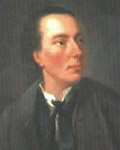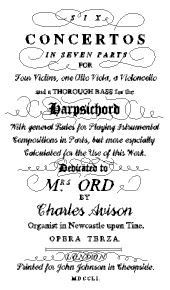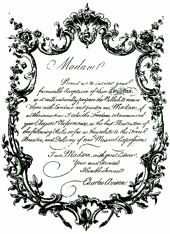|
|
|||

|
| broadsides |
|
|

|
| charles avison |
| his music |
|
|
| robert ord |
| sixstring |
| school music |
| william shield |
| links & email |
|
|
|||

|
|
Charles Avison His Music Chamber Music Opus 1 Six Sonatas (Chromatic Dorian, Gm, Gm, Dorian, Em, D) with parts for 2 violins, (c1737) Opus 5 Six Sonatas (G, C, Bb, E, G, A)) with parts for 2 violins, a violoncello and harpsichord, (1756) Opus 7 Six Sonatas (G, Gm, Bb, Dm, Am, A) with parts for 2 violins, a violoncello and harpsichord, (London, Edinburgh and Newcastle, 1760) Opus 8 Six Sonatas (A, C, D, Bb, Gm, G) with parts for 2 violins, a violoncello and harpsichord, (London and Edinburgh, 1764) Orchestral Music Opus 2 Six Concertos (Gm, Bb, Em, D, B, D) with parts for 4 violins, a viola, a violoncello, a harpsichord (Newcastle and London, 1740); Opus 3* Six Concertos dedicated to Mrs. Ord with General Rules for Playing Instrumental Compositions (D, Em, Gm, Bb, D, G) with parts for 4 violins, a viola, a violoncello, harpsichord, (1751); Opus 4 Eight Concertos (Dm, A, D, Gm, Bb, G, D, Cm) with parts for 4 violins, a viola, a violoncello, harpsichord, (1755); Opus 6 Twelve Concertos (Gm, B, Em, D, Bb, D, G, G, D, C, D, A) with parts for 4 violins, a viola, a violoncello, harpsichord, (London and Newcastle, 1758); Opus 9 Twelve Concertos, set 1 (G, D, A, g/G, C, e), set 2 (E, B, c, F, A, D)) with parts for 2 violins, a viola, a violoncello, (1766); Opus 10 Six Concertos (Dm, F, Cm, C, E, Dm) with parts for 4 violins, a viola, a violoncello, harpsichord, (1769)
*Six Concertos dedicated to Mrs Ord Opus 3 published in 1751
Written in seven parts for 4 violins, a viola, a violoncello, and a thorough bass for harpsichord; the opus 3 concertos were printed by John Johnson in Cheapside, London, and were published one year before his famous essay in 1751.
Further research has revealed the Mrs. Ord mentioned was the wife of William Ord of Fenham Hall and in 1750 of Whitfield Hall, he was the High Sheriff of Northumberland from 1747 until his death in 1768. His wife Ann Dillingham a talented amateur violinist, was related via the female line to the Sidney Montegues of descent from both the Scottish and Saxon Royal families. † Broadsides have retypeset all six of these concertos as complete scores, with an interpretation of the figured bass. These may be viewed and heard using Scorch from Sibelius by clicking on the movement links in the table below, also an Acrobat PDF of the dedication, subscription list and preface is available here. † According to family documentation from the College of Arms.
|
|||||||||||||||||||||||||||||||||||||||

|

 With the frontis page of these concertos shown left, is a letter to Mrs. Ord and a preface that gives an interesting insight into the manner, which music was performed in the provinces of England in Charles Avison's day.
With the frontis page of these concertos shown left, is a letter to Mrs. Ord and a preface that gives an interesting insight into the manner, which music was performed in the provinces of England in Charles Avison's day.